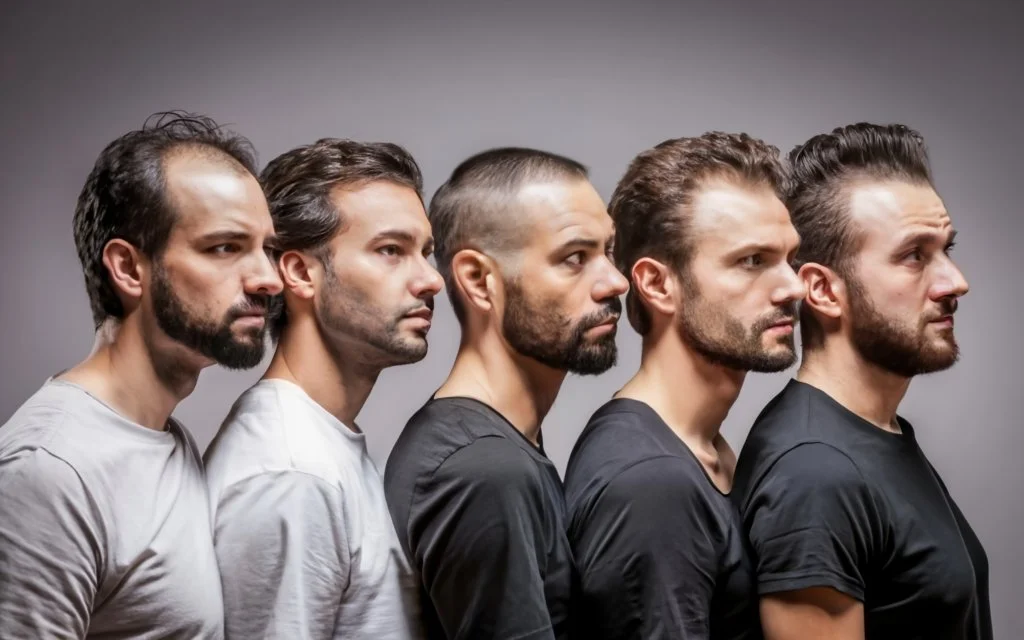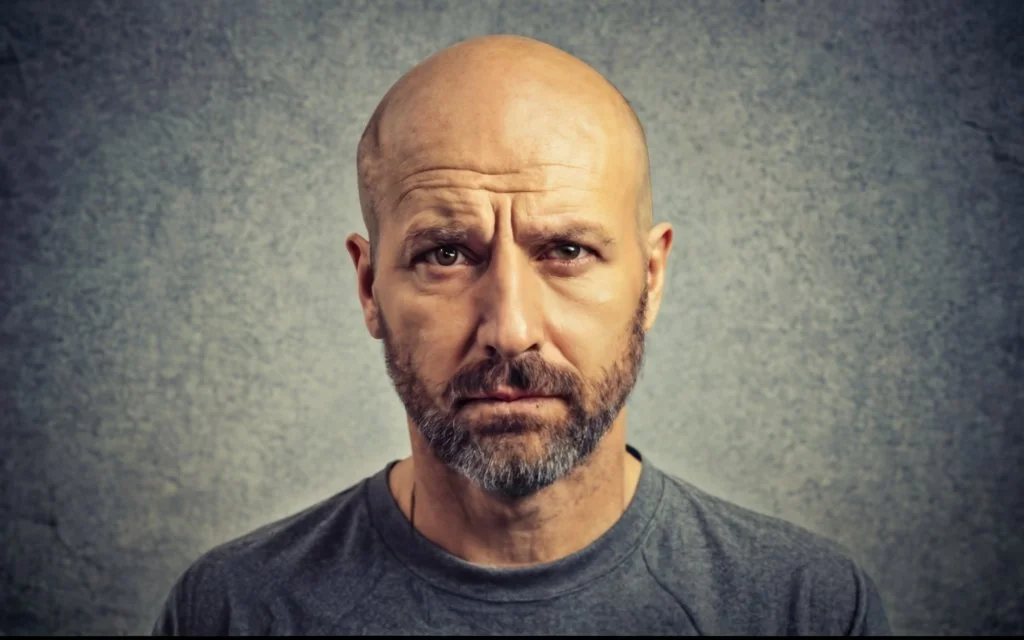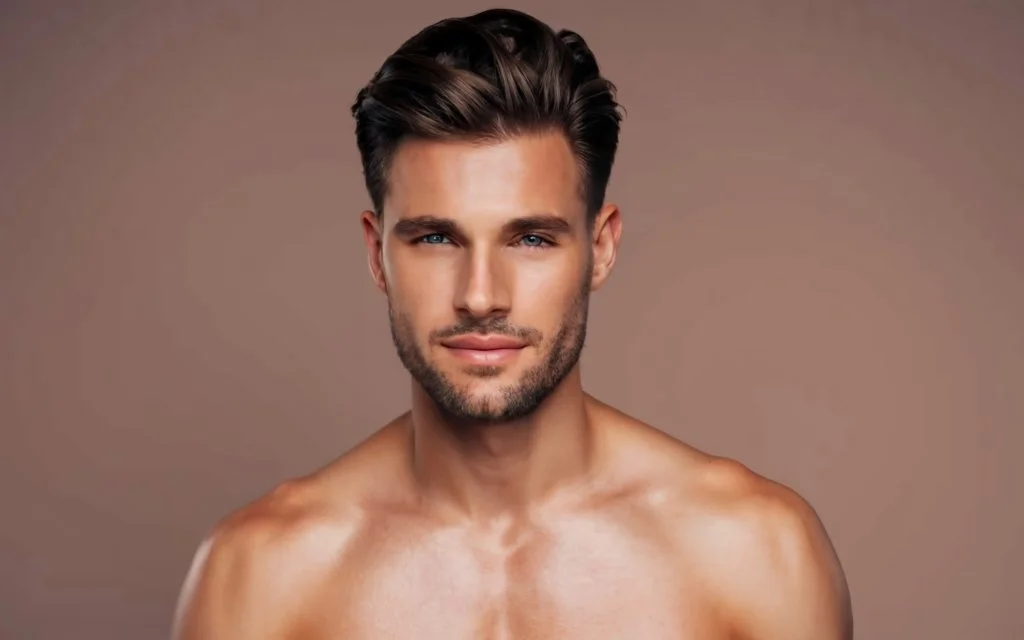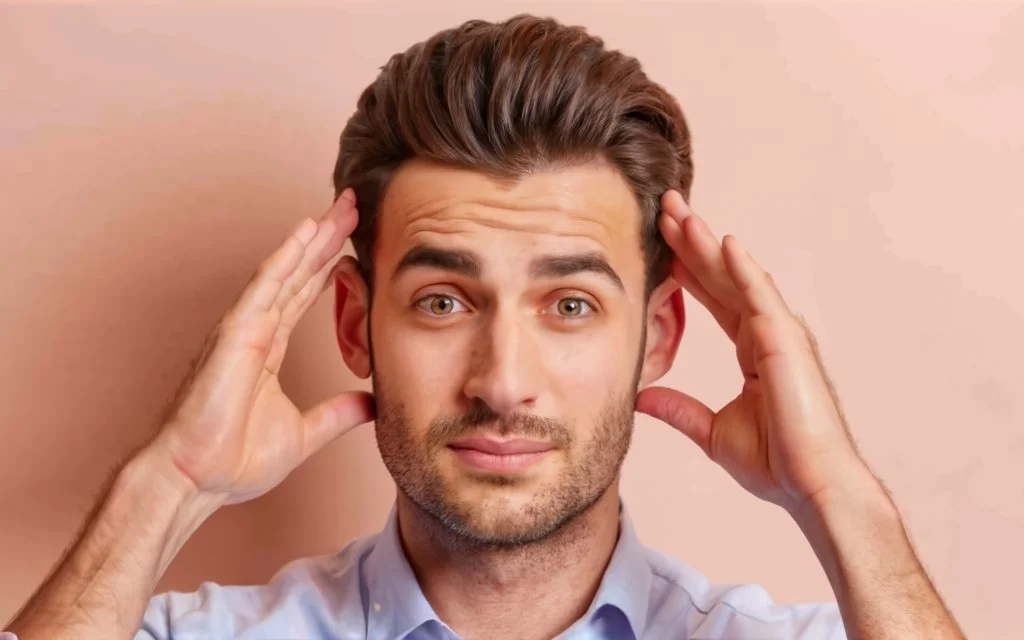Addressing the Challenge: Receding Hairline and Proven Treatment Solutions. A receding hairline is more significant than just a beauty difficulty—it’s a prevalent trouble affecting both men and women, often causing pressure and impacting shallowness. A receding hairline can be hard to enjoy, whether because of genetic predisposition, hormonal adjustments, or lifestyle factors. The accurate news is that improvements in trichology have paved the manner for various effective remedy options to assist individuals in regaining an entire and healthy hairline. This comprehensive exploration reveals the top 5 reasons behind a receding hairline and the brand-new and handiest remedies designed to restore self-belief and reclaim flourishing hair.
Top 5 Reasons for Receding Hairline are :

1. Genetic Predisposition:
One of the number one reasons for a receding hairline is genetic predisposition, frequently referred to as male-sample baldness (androgenetic alopecia) in men and woman-pattern baldness in ladies. If your family has a record of receding hairlines, there is a better chance that you can revel in it, too. Understanding your genetic heritage can provide valuable insights into the capability onset of a receding hairline.
2. Hormonal Changes:
Hormonal fluctuations can play a sizable position in hair loss and the recession of the hairline. In guys, an excess of dihydrotestosterone (DHT), a hormone derived from testosterone, can result in the shrinking of hair follicles. For ladies, hormonal modifications for the duration of pregnancy, menopause, or conditions like polycystic ovary syndrome (PCOS) can contribute to a receding hairline. Addressing hormonal imbalances is vital in treating hair loss efficaciously.
3. Lifestyle Factors:
Specific lifestyle selections can make a contribution to a receding hairline. Stress, insufficient nutrients, lack of sleep, and smoking are all elements that can accelerate hair loss. Adopting a healthy way of life, including a balanced eating regimen, regular exercising, and pressure control, can impact hair fitness and potentially gradually down or reverse a receding hairline.
4. Ageing Process and the Evolution of Hair:

- As the sands of time continue to form our lifestyles, so does the getting older procedure go away its indelible mark on various aspects of our physical being. One such subtle transformation occurs inside the realm of hair, where the complicated dance of the hair boom cycle takes on a more excellent measured pace.
- As people gracefully traverse the journey of growing older, the as-soon-as-colorful hair boom cycle undergoes an herbal deceleration. This phenomenon is not an abrupt departure but rather a slow modulation, a testament to the tricky choreography orchestrated by our bodies over the years.
- In this problematic ballet of biology, the hair follicles, those tiny architects of our completion, progressively end up less energetic. They, too, appear to heed the call of time, responding with a nuanced retreat from their erstwhile vigor. On this nuanced slowing down, the narrative of a receding hairline begins to unfold.
- The frontal area, wherein hair frames the countenance with extraordinary elegance, becomes a focus of this evolutionary story. The encroachment of the growing older process manifests here because the hairline gracefully recedes in synchrony with the passage of years. It is a silent metamorphosis, a visual echo of the inexorable march of time, etched delicately upon the canvas of one’s visage.
- Yet, it’s crucial to perceive this evolution now not as a lamentable loss but as a testimony to the awareness and resilience inherent within the human form. Just because the seasons change and the tides ebb and waft, our physicality also undergoes personal cyclical variations.
- In embracing the getting older technique, one finds an opportunity to redefine beauty and the narrative surrounding a receding hairline. It is not merely a visual cue of the years gone by but a nuanced brushstroke contributing to the masterpiece of a nicely-lived life. As the hair boom cycle gracefully adapts to the cadence of aging, it beckons us to appreciate the elegance in each level of our personal chronicles.
5. Medical Conditions and Receding Hairlines
In the problematic tapestry of our well-being, the health of our hair frequently serves as a silent barometer, reflecting the complex interplay of inner mechanisms. Amidst this intricate dance, certain clinical situations become orchestral conductors, guiding the symphony of our physiological capabilities. In hair health, these conditions can play a pivotal role, casting shadows that show up as a receding hairline.

a) Autoimmune Disorders:
The body, in its quest for equilibrium, takes an unintentional detour into the territory of autoimmune issues. These situations, marked by the immune system’s misidentification of body tissues as foreign entities, can inadvertently lead to an attack on hair follicles. The outcome? A disruption in the harmonious dance of hair boom, potentially culminating in a receding hairline. The frame’s immune warriors, of their zeal, can also unknowingly target the very architects of our locks, disrupting the finely tuned rhythm of the hair growth cycle.
b) Thyroid Problems:
The thyroid gland assumes a lead role within the sensitive stability of hormonal symphony. Disorders affecting this gland, inclusive of hypothyroidism or hyperthyroidism, can introduce discord into this challenging melody. Thyroid hormones profoundly affect the hair growth cycle, and any deviation from their harmonious ranges can tip the scales toward hair loss. A receding hairline may become a visible testimony to the thyroid’s nuanced role in orchestrating the dance of our tresses.
c) Hormonal Imbalances:
The sensitive ballet of hormones orchestrates myriad physical functions, including the growth and maintenance of our hair. Conditions that disrupt this hormonal equilibrium, whether or not because of puberty, pregnancy, menopause, or underlying endocrine problems, can affect the hair boom cycle. A departure from the norm may additionally lead to hair follicles entering a dormant phase, resulting in a receding hairline. When our hormonal balance is disrupted, it can impact our hair growth and appearance.
In a world wherein remedy and aesthetics converge, a knowledge of these clinical conditions becomes paramount. It is an adventure that beckons people to not simply deal with the visible manifestations but to delve into the complex narratives written within the body. As we delve into the intricacies of autoimmune disorders, thyroid abnormalities, and hormonal imbalances, we gain a better understanding of our health and a guide to managing the delicate balance between well-being and the beauty of a complete and vibrant head of hair.
Effective Treatment Options:
A. Topical Treatments: Over-the-counter topical remedies containing minoxidil have proven effectiveness in promoting hair regrowth. These solutions stimulate blood glide to the hair follicles, encouraging thicker and healthier hair growth.
B. Prescription Medications: Finasteride, a prescription remedy, inhibits the manufacturing of DHT and is commonly used to deal with male-pattern baldness. However, consulting with a healthcare professional before beginning any prescription remedy is crucial.
C. Platelet-Rich Plasma (PRP) Therapy: This progressive treatment involves injecting a patient’s concentrated platelets into the scalp, promoting herbal hair growth by stimulating dormant hair follicles.
D. Hair Transplantation: For those looking for an extra everlasting solution, hair transplantation includes transplanting hair follicles from one part of the frame to the affected areas, supplying an herbal and lengthy-lasting option to a receding hairline.
E. Low-Level Laser Therapy (LLLT): LLLT gadgets, which include laser caps or helmets, use low-level lasers to stimulate hair follicles and promote regrowth. This non-invasive choice is gaining popularity for its convenience and effectiveness.
Maintaining Results:
Treating a receding hairline isn’t a one-time attempt; it calls for ongoing care to preserve results. Consistent use of prescribed medications, compliance with remedies, and a persevered focus on a healthy lifestyle is vital to sustaining a complete and robust hairline.

Conclusion:
A receding hairline may be a challenging experience, but with the right know-how and remedy alternatives, you can take control of your hair health and regain self-belief. Whether through topical treatments, prescription medicines, innovative treatment options, or surgical interventions, numerous methods exist to deal with and fight the hairline recession. Consult with a healthcare expert or trichologist to determine the most suitable treatment plan for your needs and embark on a fuller, healthier hairline. Remember, confidence is not pretty much what it seems—it starts evolving with feeling true to yourself, inside and out.
Please share your thoughts in comment, at prolife360 we are open to friendly suggestions and helpful inputs to keep awareness at peak.

